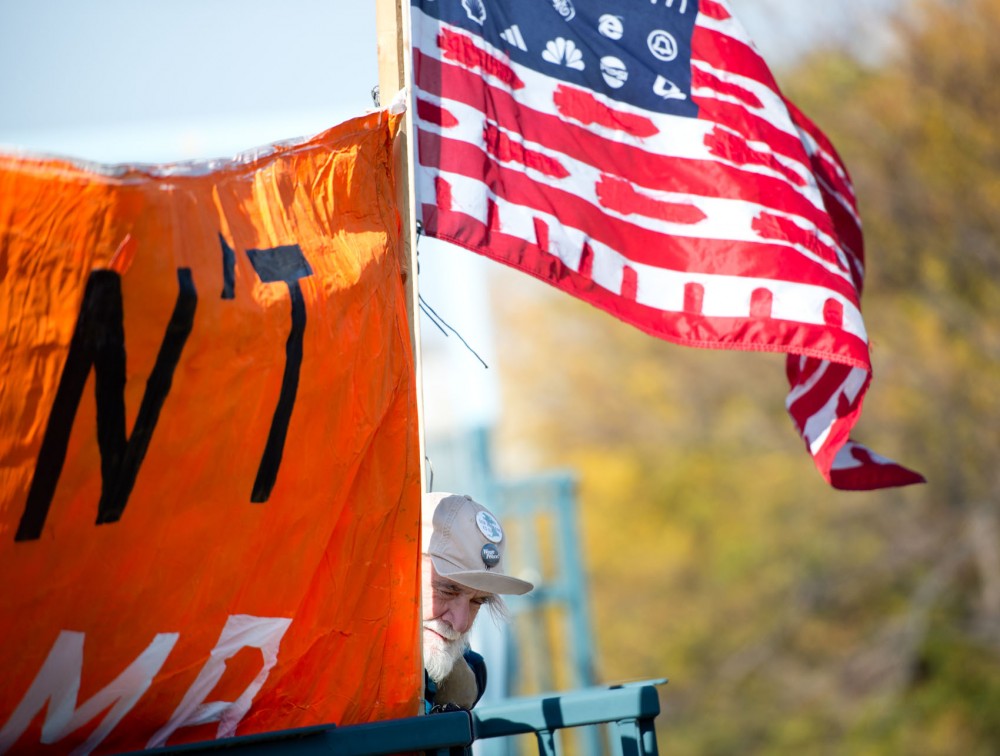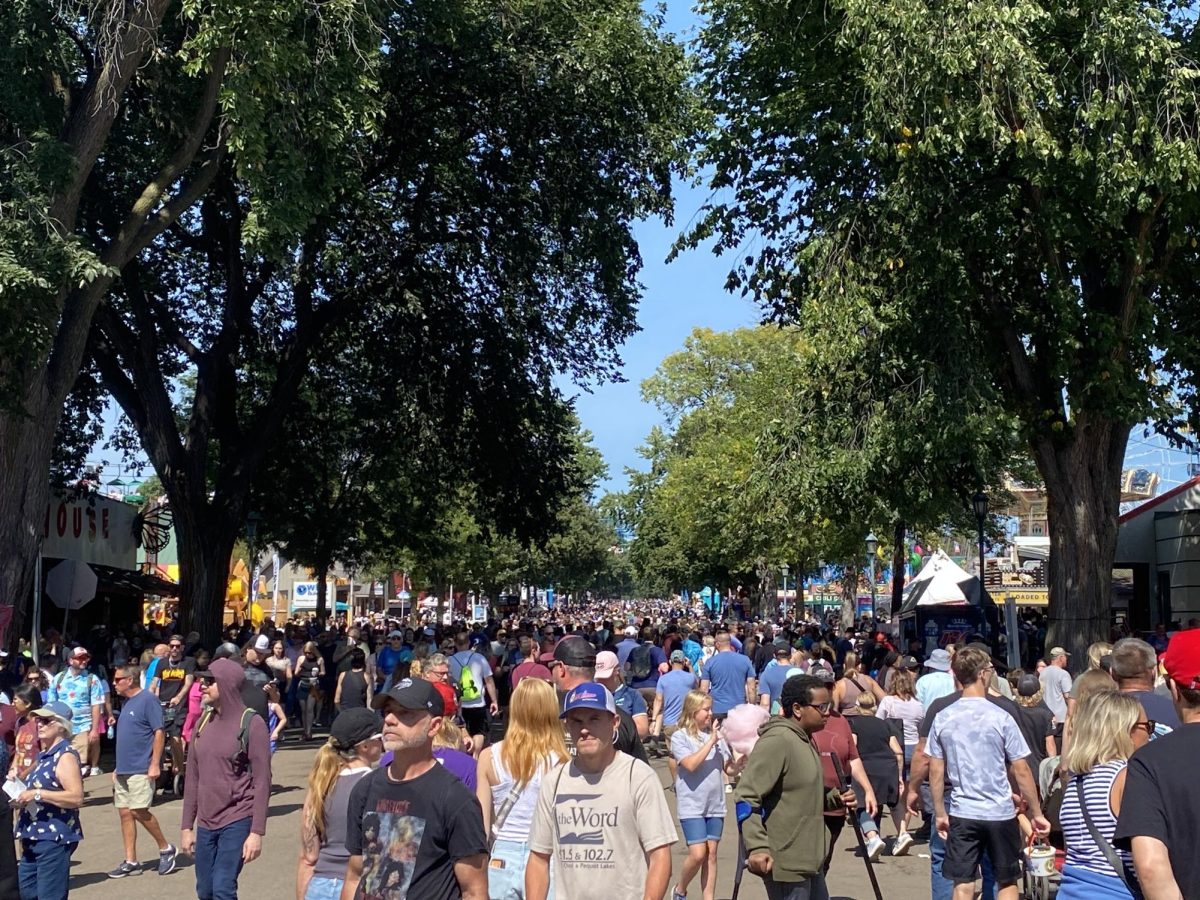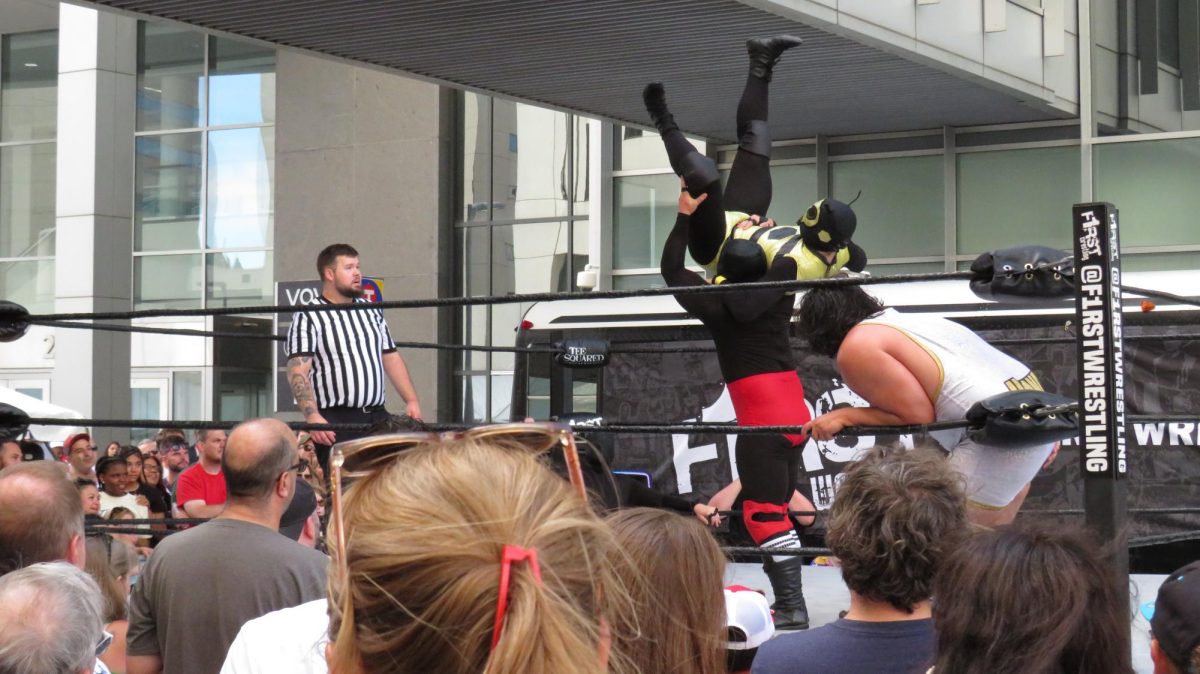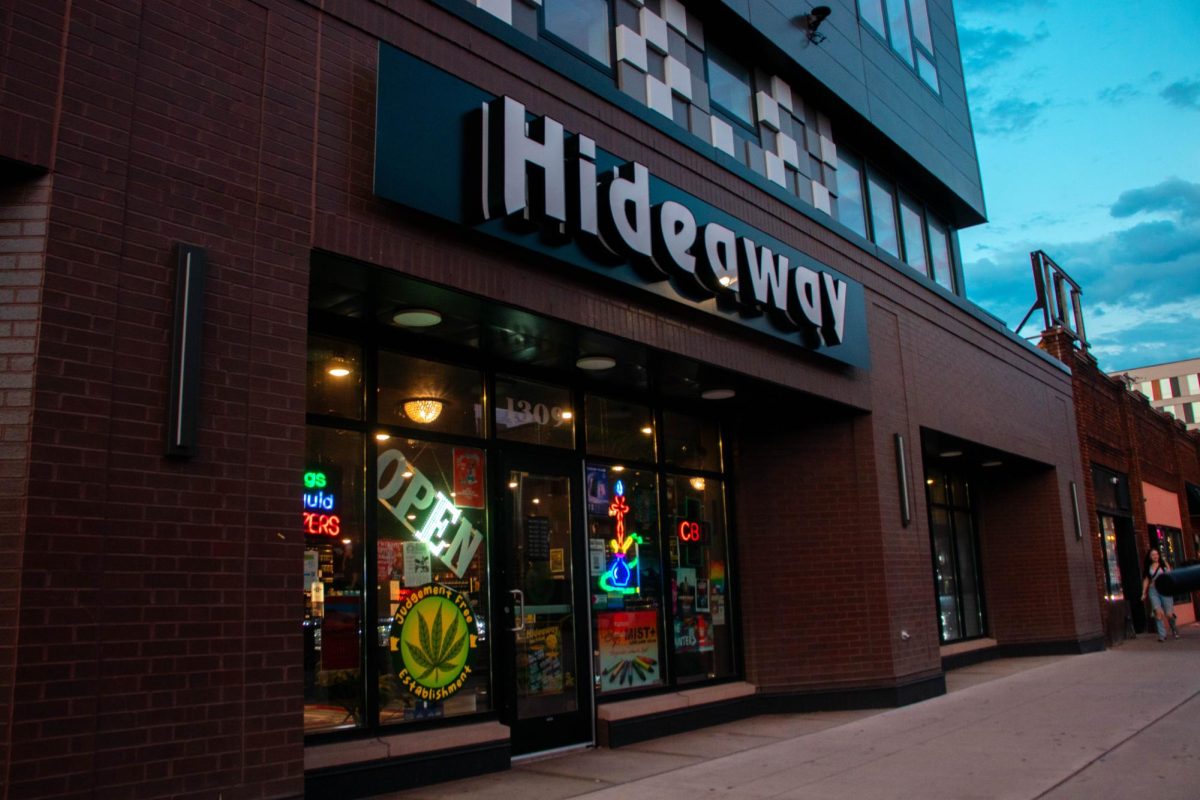Bundled protesters greeted each other Sunday with “Happy Anniversary” and a hug as they marked one year of Occupy Minneapolis.
The group of around 20 met at the Hennepin County Government Center plaza, joined with a peace march at Loring Park and rallied in front of U.S. Bank protesting foreclosures Sunday afternoon.
A year since its inception, the Occupy movement has dwindled in size, but it has succeeded in drawing attention to major national issues.
“I think one thing Occupy has done is made us all more activist in different areas,” 60-year-old Val Solovjovs said at the gathering Sunday.
Joe Gerteis, a sociology associate professor at the University of Minnesota who’s not involved with the movement, said its main accomplishment has been bringing to light what were otherwise very big and abstract problems, like bank practices and abuse in mortgage markets.
“These were political issues behind the scenes for a very long time,” Gerteis said. “They never broke into public discourse.”
A sector of the movement, Occupy Homes, has focused its work specifically on preventing foreclosures and restructuring the housing system.
“We don’t have a clear way of how to do that; we don’t know, but we’re working on it,” said Caylin Crawford, a University lab attendant involved in the movement.
“And one thing that we do know is obviously the system that we have is not working.”
Saving homes
While Occupy Minneapolis members can’t point to large policy changes, they have succeeded in saving individuals’ homes.
Crawford has been working with the legal system for two years to stay in her home, but didn’t see results until she got involved with the Occupy Homes movement.
She took the semester off from the University to work full time in the University’s Research Animal Resources department.
After a snowboarding accident two years ago, Crawford approached U.S. Bank to see if it could do anything to accommodate her while she couldn’t work. She said the bank offered to modify her loan, but first, she had to be behind on her payments, so she stopped
paying.
Instead of modifying her loan, the bank foreclosed, she said.
Crawford has since been working to stop the foreclosure and eventually filed a lawsuit for wrongful foreclosure Aug. 2, a day before she would have been evicted.
She initially hooked up with Occupy Homes MN to volunteer, but members decided to help save her house first.
“They just threw me in headfirst; it was great,” Crawford said.
She launched a social media campaign — her house has its own Facebook page — and organized a “Beat the Banks” barbeque. At the barbeque, 55 people showed up, and they all called the regional manager of Freddie Mac, which owned her mortgage, leaving messages demanding it negotiate with Crawford.
Four days later, they offered her a settlement.
“I accomplished more in the three weeks that I was working with Occupy Homes than I had in two years working through the legal system,” Crawford said.
Gerteis said Occupy has turned around a long-term decline in the impact of peaceful protests.
He said peaceful protest was very successful for a long time, but over time those protests have become really routine and get
watered-down.
The Occupy movement broke “out of that routine just because of its prominence and the number of people,” Gerteis said.
Clear demands?
The Occupy movement began with broad calls for change and few specifics.
Crawford said this was one of the problems with the movement initially.
“If you don’t have an ask or you don’t have a demand for the people you’re protesting against, even if they want to get rid of you, they don’t know how,” Crawford said.
Gerteis, however, said the lack of demands was both a weakness and a strength.
“In one way, it’s a strength because it meant that it wasn’t easy to sweep it under the rug because there couldn’t be an empty political promise,” Gerteis said.
In the past year, the Minnesota movement has become less focused on encampments and more organized in its demands.
Occupy Homes meets every Saturday, and anyone is welcome.
“I’ve been very impressed with just how they’re organized,” Crawford said. “They have such a great system for getting things done in a quick and efficient way.”
The future of Occupy
Crawford said she will stay involved in Occupy Homes long after she has saved her home.
She said the movement is working toward systemic change.
“I think we’re right on the brink,” she said.
Gerteis said whether or not the movement continues under the name “Occupy,” he thinks elements and sub-movements like Occupy Homes will carry on with more defined
agendas.
“It’s been the focus of a generation of activists,” Gerteis said. “There’s lots of new people that are probably over their lifetimes going to be active on a lot of issues, probably directly as a result of being involved in the Occupy movement.”








